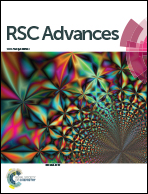Modified phyto-waste Terminalia catappa fruit shells: a reusable adsorbent for the removal of micropollutant diclofenac
Abstract
This study investigated the preparation of a reusable adsorbent from the phyto-waste Terminalia catappa fruit shells by acid-thermal modification and utilization for the removal of diclofenac from aqueous systems. The structural characteristic features of the modified T. catappa fruit shells (MTCFS) were analysed using Scanning Electron Microscopy, Fourier Transform Infrared Spectroscopy and Brunauer–Emmett–Teller analysis. Batch experiments proved that temperature and pH mainly influenced the adsorption process. The Langmuir and Freundlich isotherms were obeyed for the diclofenac adsorption. The Temkin isotherm model revealed that increasing temperature affected the adsorption of diclofenac. The Dubinin–Radushkevich isotherm indicated that the present adsorption system was achieved through physical interactions. A pseudo-second-order kinetic model was well fitted for the diclofenac adsorption. Intraparticle diffusion results indicated increases in the rate of adsorption and in the boundary layer thickness. The thermodynamic results revealed that increasing the temperature inversely affected the diclofenac adsorption. Recycling experiments confirmed that the MTCFS were found to be quite stable and retained their adsorption efficiency for up to eight cycles of diclofenac removal.


 Please wait while we load your content...
Please wait while we load your content...